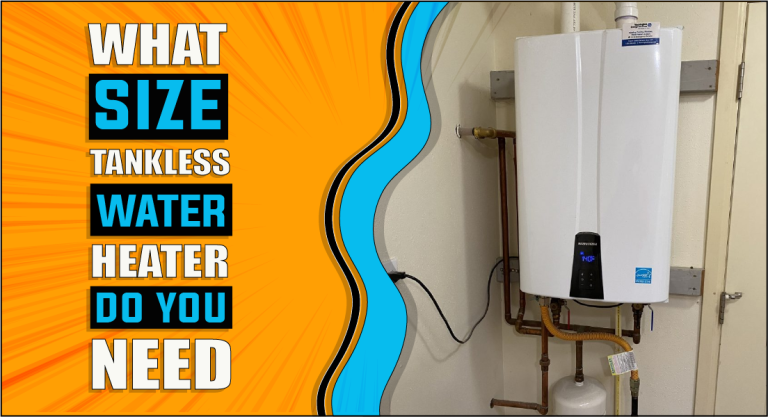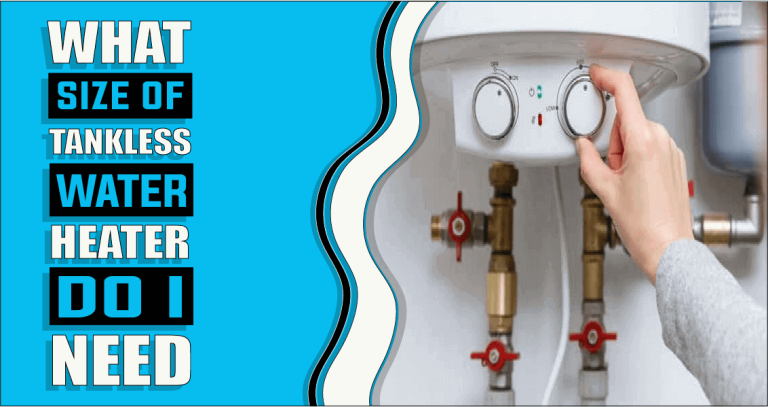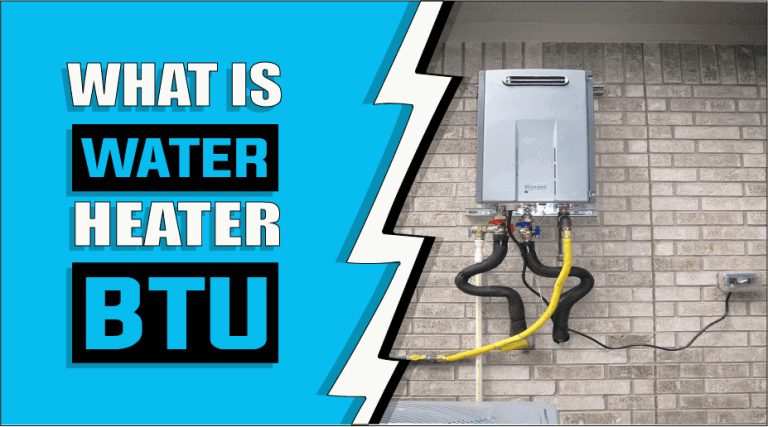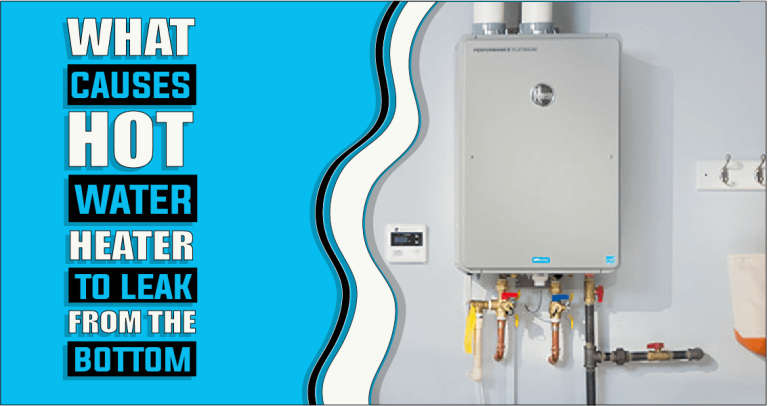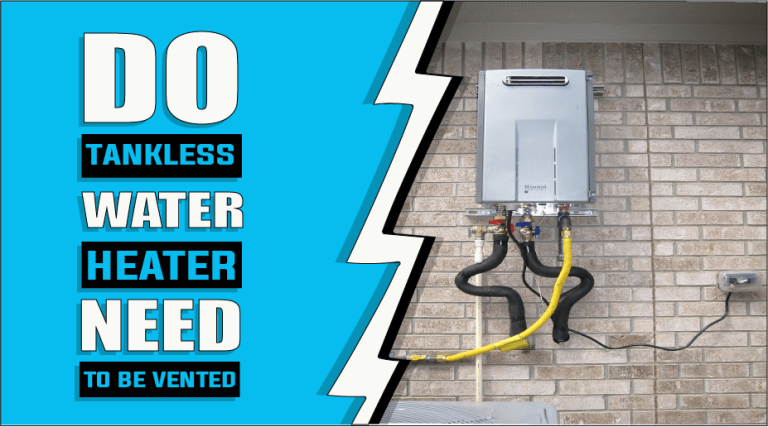How Many GPM for Tankless Water Heater – The Truth Reveals
If you’re in the market for a tankless water heater, the idea is so attractive and understandable. As these systems offer efficient, space-saving hot water whenever and wherever you need it within your home. But there are several considerations to take into account before making your purchase. An important consideration is getting the unit with the right GPM, or Gallons Per Minute flow rate. This can be an intimidating concept for those unfamiliar with the inner workings of water heaters, but don’t despair! We’re here to help decode what GPM means when it comes to making sure your new tankless system will fit into your household’s lifestyle needs. Continue reading to learn more about how many GPM for tankless water heater should have!
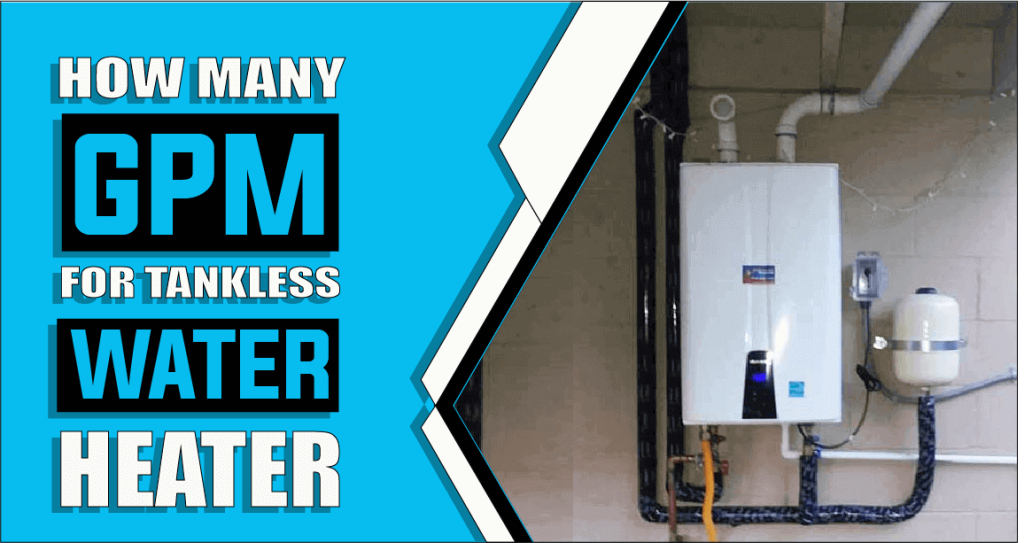
Let’s explore how many GPM for a tankless water heater.
GPM stands for gallons per minute, and it’s the measure of water flow from your tankless water heater. This rating typically refers to the amount of hot water that can be delivered from the heater in one minute. Generally speaking, most tankless water heaters will have a GPM rating of between 2-5 GPM; however, this varies depending on the size and type of water heater you want.
For instance, some models may provide 3 to 4 GPM for larger households or those with multiple bathrooms, while other models may offer up to 8 to 11 GPM to handle high-demand applications such as commercial use or a large home with several bathrooms.
It’s important to remember that your desired GPM must match what your tankless water heater is capable of delivering to avoid any issues related to overheating and inadequate delivery performance. Ultimately, before deciding on a specific model or size of tankless water heater, you should always check the GPM rating and make sure it meets your hot water needs.
Factors that affect GPM for tankless water heaters
The GPM rating for tankless water heaters can be impacted by various factors such as the size of your home and the number of bathrooms you have. Factors like this should be taken into consideration to choose a tankless water heater that provides enough hot water flow to meet your household’s needs.
1: Size of the household or number of people using hot water
The size of a household and the number of people using hot water can have a significant impact on the efficiency and gallons-per-minute output of a tankless water heater. A larger household or more people using hot water will require greater GPM capabilities from the tankless water heater. This is especially true when multiple showers or faucets are being utilized at once, as each shower will require separate streams of heated water.
If a household consists of just one person, then they may only need a unit with lower GPM capabilities; however, households with larger families may require units that can deliver more GPM to maintain adequate hot water pressure throughout their home.
2: Temperature rise needed
The temperature rise needed for a tankless water heater is also an important factor that determines its GPM output rate. The temperature rise is the difference between incoming cold water temperature and desired output temperature, typically 120 degrees Fahrenheit is considered optimal for hot water use in most homes.
When calculating the ideal number of GPMs needed, it is important to consider both the incoming cold water temperature and the desired output temperature. Depending on how much energy is required to heat the incoming cold water stream and reach the desired output temperature, it can significantly affect how much GPM a certain tankless unit can provide efficiently and effectively.
3: Fuel type being used
The type of fuel used for a tankless water heater also plays an important role in determining its efficiency level and gallons-per-minute (GPM) output rate. Fuel types such as natural gas, propane, and electric models can vary in their energy efficiency ratings. Fuel types such as natural gas, propane, and electric models can vary in their energy efficiency ratings.
- Gas powered units
Gas-powered units tend to have higher levels of efficiency than electric ones due to their more powerful heating elements which provide higher BTU outputs and shorter warm-up times for hot water delivery.
- Electric units
Electric units may be preferable in some cases due to their smaller size and quieter operation, which makes them perfect for tight spaces or minimalistic homeowners who don’t want excess noise disruption from their appliances. However, they may have lower GPM rates due to their smaller heating elements and longer warm-up times.
4: Climate and location –
The climate and geographical location of a home can play an important role in determining the efficiency of a tankless water heater. Homes located in areas with colder climates require more energy to maintain desired hot water temperatures, resulting in decreased GPM output rates for the unit.
5: Plumbing layout and age
The plumbing layout of a home can also impact the efficiency levels and GPM output rates of tankless water heaters. Homes with older piping systems tend to have lower efficiency due to their lack of insulation, which can result in increased energy loss. Additionally, homes with complicated plumbing layouts may require additional energy to properly heat water over a greater distance, leading to decreased GPM output rates.
In conclusion, when choosing a tankless water heater for your home, it is important to take all of these factors into account to ensure that you select the best unit for your needs. By considering size of household, temperature rise needed, fuel type being used, climate and location, and plumbing layout and age, you can select a tankless water heater that will be the most efficient and cost-effective for your home. With the right information, you can find the perfect tankless water heater to meet all of your hot water needs.
Estimating tankless water heater’s GPM needed by households
To accurately estimate the GPM of a tankless water heater needed by households, here are a few steps to follow.
1: Assessing the number of hot water fixtures in a home or business
Before estimating the total gallons per minute (GPM) needed to supply hot water to a home or business, it is important to accurately assess the number of hot water fixtures present in the building. These fixtures can include anything from a single kitchen sink, bathroom sink, bathtub, showerhead, laundry area, and dishwasher.
For residential homes, each fixture may have different needs but typically include one sink per bedroom and up to two sinks in bathrooms; one bathtub; one showerhead; one laundry area with a washing machine; and one dishwasher. For businesses depending on their size and purpose, they may need additional appliances such as commercial dishwashers or handwashing stations for workers’ use.
2: Calculating the flow rate per fixture needed to supply enough hot water
Once all the fixtures have been accurately assessed, it’s time to calculate how much GPM is needed for each fixture for them to receive enough hot water.
For example,
- Standard sinks usually require 1 to 2 GPM.
- Showers often require 2 to 3 GPM due to their increased usage length over sinks.
- The kitchen dishwasher typically requires 1 to 2 GPM.
- Bathtubs tend to use 2 to 3 GPM.
- Jacuzzi hot tubs may require up to 5 GPM or higher.
- Washing machines only need 1 to 2 GPM due to their shorter use time during which they draw less hot water than other appliances like a shower.
3: Add up the total GPM needed to supply hot water to a home or business
Once all the flow rates for each fixture have been calculated, it’s time to add them up to find the total GPM needed to supply hot water throughout a home or business.
For instance,
If a household includes two bathrooms with two sinks, a showerhead, and a bathtub; plus an additional kitchen sink and dishwasher; then the total GPM needed could be estimated at 11-12 GPM.
Standard GPM ratings for various tankless water heaters
After calculating the GPM needed for a household, it’s time to look into tankless water heater models and their standard GPM ratings.
1: Electric tankless heaters
When it comes to electric tankless water heaters, the standard GPM ratings can range from 6-8. This is dependent on both the model and size of the heater.
- Depending on Size
Electric tankless water heaters that are smaller in size, tend to have a lower GPM rating as they do not draw as much power from the electrical current to generate heat. On the other hand, larger electric tankless water heaters have a higher GPM rating due to their ability to draw more power from the electrical current.
- Depending on Model
In addition to their size, the actual make and model of an electric tankless water heater can also affect its GPM rating. Models that are specially designed for energy efficiency typically have a lower GPM rating than those designed for maximum output.
2: Gas Tankless Heaters
When it comes to gas tankless water heaters, the standard GPM ratings tend to be slightly higher than those of electric models. In general, gas types will have a range between 8-10 GPM depending on their size and model.
- Depending on Size
Just like electric models, smaller gas types will typically have a lower GPM rating due to less power being required by them while larger ones require more power thus resulting in a higher GPM rating.
- Depending on Model
Additionally, those models built specifically for energy efficiency may still have a lower GPM rating than those built for maximum output despite them using gas as their source of energy instead of electricity. This is because these models either use special insulation materials or technology to reduce any excess losses which allows them to operate at more efficient levels even with reduced output capabilities.
Additional Tips to Consider When Choosing a Tankless Water Heater
When it comes to choosing a tankless water heater, there are additional tips to consider.
1: Quality matters
When selecting a tankless water heater, it is important to invest in a good quality unit that is rated for energy efficiency and performance. Doing so will help to lower your energy bills over time and provide better performance overall. Additionally, by choosing a higher-quality model you can ensure that your tankless water heater will last much longer than cheaper models.
2: Utilizing a tankless heater size calculator
It is also important to utilize a tankless water heater size calculator before making any purchase decisions. This will help you to determine the correct GPM rating of any given model. Additionally, it can also be used to compare various models before selecting one that is best suited for your needs.
3: Consider hiring professional
When installing a new tankless water heater, it is important to hire certified HVAC technicians who are experienced and trained in the installation process. This will help ensure that the installation is carried out correctly and with maximum efficiency, allowing your tankless heater to reach its full potential and saving you money on costly repair bills down the line.
4: Investing in insulation
Investing in proper insulation around your pipes helps to prevent heat loss which can have a significant impact on energy bills over time. By investing in insulation materials such as closed-cell foam or fiberglass batting, you can effectively reduce heat loss from pipes while also preventing condensation build-up which can lead to additional costs due to repairs and replacement parts down the line.
5: Regular maintenance
Regular maintenance of your tankless water heater is essential for ensuring its longevity as well as its energy efficiency year after year. Doing so involves performing routine inspections of all components such as sensors, valves, and flow control systems for signs of wear or damage which could potentially result in higher energy bills if left unchecked.
Additionally, regular cleaning of the heating element will help keep it running at full capacity and minimize limescale buildup which could lead to decreased performance levels if not addressed properly.
Frequently Asked Questions
A family of four will generally require a tankless water heater size with an output rating of at least 8 GPM to meet their needs.
Yes, generally speaking, a higher GPM rating will provide more efficient and powerful performance compared to models with lower ratings. However, it is important to consider your specific requirements when selecting a tankless water heater size as investing in one which is more powerful than you need could lead to additional costs due to wasted energy.
Most tankless water heaters will come with an output rating that is measured in gallons per minute (GPM). This is typically listed on the product information sheet or can be found on the manufacturer’s website. Additionally, there are tankless water heater size calculators available online which can help you determine the correct GPM rating for your needs.
The GPM rating of a tankless water heater is determined by taking into account the desired temperature rise, flow rate, and other factors such as pipe size. If you need assistance in calculating the correct GPM rating for your needs, it is recommended to use an online tankless water heater size calculator.
2.5 gallons of water are used per minute by a typical 2.5 GPM shower head. For a 10-minute shower, that comes to 25 gallons. On the other side, a low-flow shower head with a 1.8 GPM utilizes 1.8 gallons of water every minute.
Conclusion
We hope you found this article useful in answering the question: how many GPM for a tankless water heater? When selecting a tankless water heater, it is important to consider the GPM rating of the model. The GPM rating will determine how much hot water can be provided at once and should be chosen based on the specific needs of your household. To ensure maximum efficiency, it is recommended to invest in professional installation as well as proper insulation around pipes, and regular maintenance to keep the heater running at full capacity. By taking these considerations into account, you can choose the right tankless water heater size with an optimal GPM rating that best suits your requirements and saves energy costs in the long run.
Ella John is passionate about helping her readers make the best choice when purchasing a heater. She understands that selecting a heater can be difficult and strives to provide information to help make the decision easier. Ella’s website, Heatersinfo.com, provides valuable insight into heating trends and types of heaters and tips on how to care for them. She also advises selecting the right heater based on individual needs and preferences. Her expertise in electronics makes her an excellent source of knowledge, and she is confident that anyone who visits her website will find the perfect heater information for their needs. Ella’s dedication to helping others make educated decisions about buying the right heater is unparalleled, and she hopes to continue offering her expertise for many years. With Ella’s help, finding the perfect heater can be a breeze!

